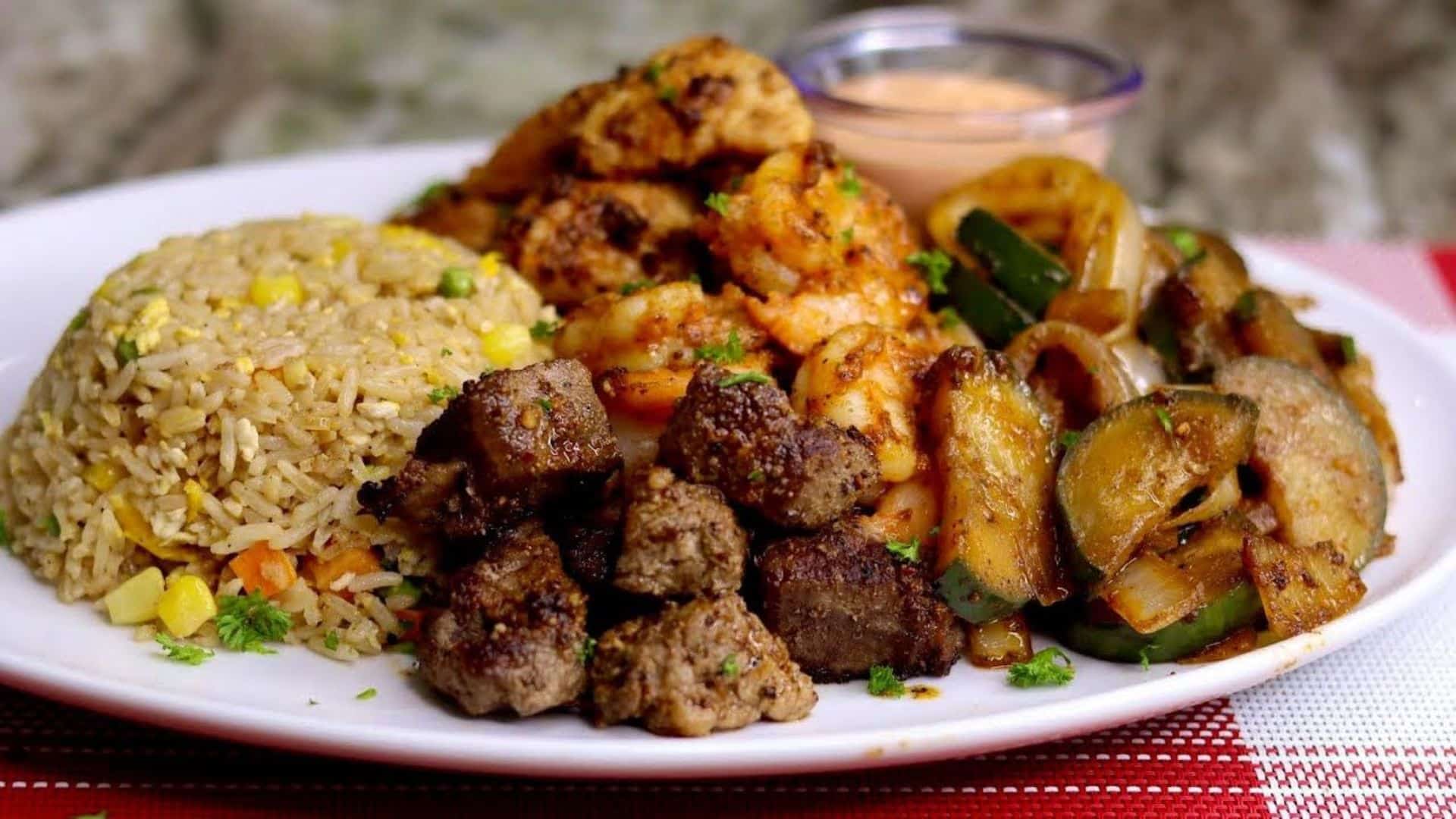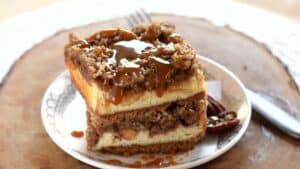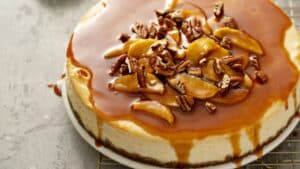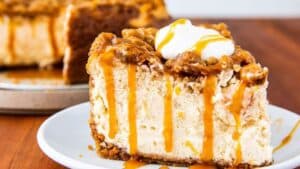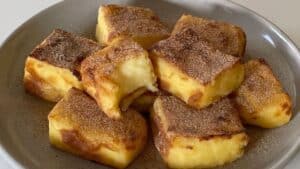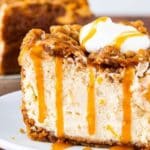Hibachi Chicken Dinner on the Blackstone Griddle Recipe
There’s something primal and deeply satisfying about food sizzling on a griddle. That smell of searing meat mixed with a hint of garlic and butter? Yeah gets me every time. And when it comes to a Hibachi chicken dinner made right on a Blackstone griddle, you’re not just cooking; you’re putting on a show.
This article is for the serious cook, the weekend griddle junkie, or the culinary pro who wants to nail this Japanese-American classic in their own backyard. I’m not here to give you a generic step-by-step no sir. I’m here to unpack the techniques, the science, the little mistakes folks don’t even know they’re making, and how a flat-top griddle changes the whole game.
So, let’s crank up that Blackstone, because things are about to get loud, messy, and absolutely delicious.
What Makes Hibachi Chicken on a Blackstone Griddle So Special?

It’s the surface, my friend. That massive slab of seasoned, hot-rolled steel retains heat like no other. Unlike traditional pans, a Blackstone griddle lets you control multiple heat zones at once, searing chicken while gently steaming vegetables a few inches away. It’s live fire cooking without the open flame.
The secret sauce here (literally and figuratively) is that Maillard reaction. Browning chicken on a flat top hits around 300°F, creating those complex, nutty, roasted flavors that give Hibachi chicken its signature taste. And because the Blackstone has so much real estate, you never overcrowd the meat. Overcrowding equals steaming. And nobody orders “steamed” chicken at a Hibachi joint.
Choosing the Right Chicken It’s Not All the Same
Most folks don’t think twice about this, but the cut matters. Boneless, skinless chicken thighs should be your go-to. They’re juicy, forgiving, and have enough fat to caramelize beautifully on a hot surface.
Chicken breast? Sure, you can use it, but it dries out quicker than a paper towel in the sun. If you insist on breast meat, consider a quick brine 1 tablespoon of kosher salt per cup of water, for 30 minutes. Makes a world of difference.
Also cut it right. Big chunks will cook unevenly. Aim for 1-inch cubes or thin strips. They sear fast, soak up sauce like a sponge, and feel just right on the fork.
Building Layers of Flavor The Hibachi Way
Here’s what they won’t tell you at chain restaurants: the real flavor doesn’t come from soy sauce alone. A proper Hibachi chicken dinner layers salty, sweet, umami, and heat.
Key ingredients:
- Soy sauce (naturally brewed, not the synthetic stuff)
- Mirin (Japanese sweet rice wine)
- Toasted sesame oil
- Fresh garlic and ginger (don’t skip this powdered versions just won’t cut it)
- Butter real, unsalted, high-fat butter. No margarine nonsense.
- A touch of sugar or honey to balance the umami
- Sake or rice vinegar for brightness
Mix it up into a simple sauce base before you even hit the griddle. Trust me, juggling bottles while cooking at 400°F is a rookie mistake.
The Blackstone Griddle Setup Zones, Heat, and Timing
Here’s where most backyard cooks get it wrong they crank the entire surface to high and hope for the best. Nope.
Set up three zones:
- High heat for searing the chicken.
- Medium heat for stir-frying vegetables.
- Warm/Off for resting cooked food or melting sauces.
Preheat the Blackstone for a solid 10-15 minutes. Don’t rush it. You want that surface north of 375°F before the meat touches it. Test it by flicking a drop of water it should skitter and evaporate in seconds.
Cooking sequence matters.
Start with the chicken it takes longest and leaves behind flavorful browned bits (fond) that’ll amp up your veggies later.
Cooking the Chicken No Half Measures
Oil the surface lightly with a high smoke-point oil (canola, avocado, or grapeseed). Drop the chicken pieces on the high-heat zone in a single, spaced-out layer. Don’t touch ’em for 2-3 minutes. That’s the crust-forming zone.
Once browned, toss them a bit. Add minced garlic, ginger, and a pat of butter. The smell right here? Worth the price of admission.
Drizzle in your sauce. It should sizzle and thicken instantly, coating the chicken in glossy, savory goodness. Move them to a lower-heat zone while you handle the sides.
Hibachi-Style Vegetables A Balancing Act
Classic choices are onion, zucchini, mushrooms, and carrots. Peppers and broccoli work great too.
Cook vegetables on a medium heat zone with a mix of oil and butter. Season with salt, pepper, a splash of soy, and mirin. You want them crisp-tender, not mushy.
Pro tip stagger the veggies based on their cook times.
- Carrots first
- Onions next
- Mushrooms last
And keep them moving. Hibachi cooking is all about timing and motion.
Fried Rice or Noodles? Make the Call
Most pro setups won’t skip this. Fried rice loves the flat top every grain gets a chance to crisp. Same zone strategy applies:
- Push rice to medium heat.
- Add beaten egg, scramble it fast.
- Toss in rice, soy sauce, sesame oil, peas, carrots.
- Finish with scallions and a dot of butter.
If you prefer noodles, Yakisoba or Udon work best. Quick stir-fry with sauce, veggies, and a splash of stock.
Common Mistakes You’ll Want to Dodge
Overcrowding the griddle. Deadly. Kills the sear, steams the meat.
Cold chicken. Always let meat rest to room temp for at least 20 minutes before cooking.
Cheap soy sauce. Makes your dish taste flat and overly salty. Go for Kikkoman or a good Japanese import.
Skipping the butter. Butter balances the umami and rounds out flavors. It’s a cornerstone of American Hibachi-style cooking.
Why the Blackstone Griddle Wins Over Hibachi Tables
Yes the spectacle of a teppanyaki restaurant is fun. But a Blackstone gives you control. More heat, more space, no weird ceiling vent requirements.
According to Blackstone’s 2023 consumer report, over 65% of griddle owners said they used it for Asian-style stir-fry and Hibachi dinners at least once a month. It’s fast, social, and surprisingly easy to clean.
And if you’re running a catering business or food truck? A Blackstone’s portability and output can rival a fixed commercial teppanyaki station for a fraction of the cost.
Emerging Trends: Japanese-American Fusion on the Griddle

Chefs are getting creative with Hibachi-style griddle cooking.
Examples popping up in 2024:
- Hibachi chicken tacos with miso slaw.
- Griddle-seared Hibachi pizza crust topped with teriyaki chicken.
- Hibachi chicken ramen burgers.
These are Instagram gold and wildly popular at pop-up events.
Final Thoughts: How to Level-Up Your Hibachi Game
If you really want to stand out with your Blackstone Hibachi chicken:
- Invest in high-quality ingredients. It’s not optional.
- Master your heat zones. They’re your secret weapon.
- Use fresh aromatics and layer flavors don’t rely on bottled sauces.
- Work clean and fast. Hibachi cooking waits for no one.
If you’re serious, practice on smaller batches, experiment with timing, and log your heat settings. Mastery’s in the tiny adjustments.
And if you’ve made it this far you’re halfway to turning your backyard into the hottest Hibachi joint in town.
Hungry yet?
